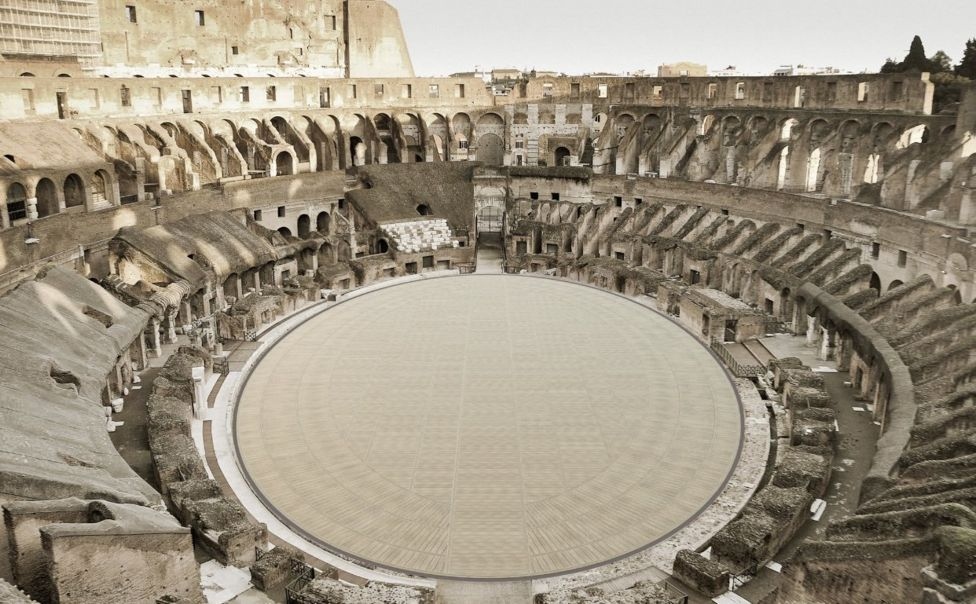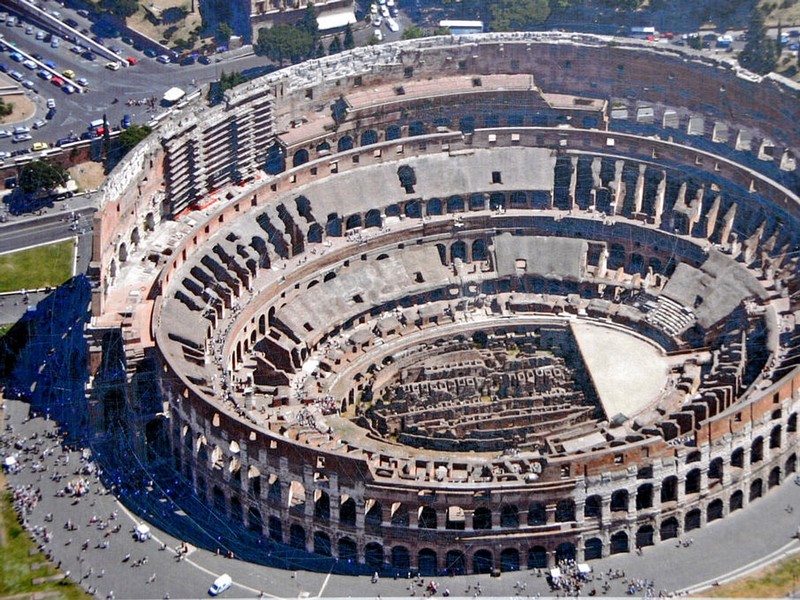News
Sports in ancient times and emphasis on winning competitions
The athletic contests mentioned by the apostle Paul are an indispensable feature of ancient Greek civilization. What does history tell us about those competitions and the atmosphere surrounding them?
Recently, an exhibition on ancient Greek athletics, Nike—Il gioco e la vittoria (“Nike—Athletics and Victory”), was held at the Great Hall of Rome. The artifacts on display provide some answers to those questions and provoke reflections on the perspective of Christ’s followers on sports.

An ancient tradition
Greece was not the first civilization to engage in sports. However, around the 8th century BCE, the Greek poet Homer described a vibrant society characterized by heroic ideals and competitive spirit, where military prowess and athletic spirit were highly valued. As explained in the exhibition, the first gatherings in Greece were religious festivals to honor the divine at the funerals of heroic figures. For example, Homer’s Iliad, the oldest surviving work of Greek literature, describes how noble warriors, friends of Achilles, laid down their weapons at the funeral for Patroclus and competed in the arts of war, wrestling, discus throwing, and running chariot races to demonstrate courage.
Similar festivals gradually spread throughout Greece. Guidebooks for the exhibition state: “These festivals are a fundamental opportunity through which the Greeks, out of respect for the gods, set aside endless and often fierce conflicts and succeed in elevating the expression of the competitive spirit through a peaceful but equally sincere achievement: that is, athletic competition.”
Independent city-states regularly gathered at common worship centers to honor their gods through athletic competitions. Over time, four such gatherings—Olympic and Nemean, both dedicated to the god Zeus, Pythian, dedicated to the god Apollo, and Isthmian, dedicated to the sea god Poseidon—became significant and eventually were ranked among the major festivals of all Greece. This meant that these festivals opened up to athletes from all over the Greek world. The festivals included rituals and prayers while also honoring the gods through competitions at the highest level of athletics or arts.
It is said that the oldest and most famous festival was held in 776 BCE, organized every four years to honor the god Zeus at Olympia. The Pythian Games ranked second in importance. Held near the renowned temple of the ancient world, at Delphi, this festival also included athletic events. But to honor the god of poetry and music, Apollo, the emphasis was on poetry and dance.
The disciplines
Compared to modern sports, the number of events was quite limited, and only men participated. The ancient Olympic program never had more than ten events. Statues, reliefs, mosaics, and paintings on pottery displayed in the Great Hall give an overview of those events.
The footrace took place at three distances—stadium, about 200 meters; double stadium, equivalent to about 400 meters today; and long-distance, about 4,500 meters. Athletes ran and trained completely naked. Competitors in the five combined events competed in running, long jump, discus throw, javelin throw, and wrestling. Other competitions included boxing and pankration, described as “a brutal sport combining unarmed combat with wrestling.” Then there were chariot races at a distance of over 1,600 meters, with lightweight, open-sided chariots drawn by two or four horses or large ones.
Pankration was an extremely brutal discipline and sometimes deadly. Fighters wrapped their hands around hard leather pieces with dangerous metal studs. You can imagine why a fighter named Stratofonte couldn’t recognize himself in the mirror after four hours of pankration. The ancient statues and mosaics testify to the terribly contorted faces of pankration fighters.
In wrestling, the rules allowed only upper-body holds, and the winner was the first to throw the opponent to the ground three times. Conversely, in pankration, there were no restrictions on holds. Fighters could kick, punch, and twist limbs. The rules only prohibited eye-gouging, scratching, and biting. The goal was to pin the opponent to the ground and force a submission. Some considered this discipline “the most spectacular scene in all of Olympia.”
It is said that the most famous pankration match of ancient times took place in the final of the Olympic Games in 564 BCE. Arrhachion, while being choked, ingeniously dislocated his opponent’s toe joint. The opponent, in too much pain, conceded defeat just before Arrhachion died. The referee declared Arrhachion’s lifeless body the winner!
Chariot racing was the most prominent and also the most favored by the aristocracy, as the winner was not the charioteer but the owner of the chariot and horses. The crucial stage in the race was the start, where the charioteer had to keep to the inside track, especially at each turn at the two ends of the racecourse. Errors could lead to accidents, making this popular event even more spectacular.
Prizes
The Apostle Paul said, “Do you not know that in a race all the runners run, but only one receives the prize?” (1 Corinthians 9:24) Winning is paramount. There are no silver or bronze medals, no second or third prizes. The exhibition explains: “Victory, ‘Nike,’ is the ultimate goal of the athlete. Only this is enough because only this reflects their true nature, both physically and morally, and is the pride of their hometown.” This attitude is summed up in a line from Homer’s works: “I have learned always to excel beyond others.”
The prize awarded to the winner at the Panhellenic Games was symbolic—a wreath of leaves. Paul called it a “corruptible crown” or “wreath of victory.” (1 Corinthians 9:25) However, that prize carried deep significance. It symbolized the very power that nature bestows upon the victor. Victory, pursued with focused determination, signifies the grace of the Holy Spirit. Exhibition artifacts illustrate the imagery that ancient sculptors and painters envisioned for Nike, the Greek goddess of victory, placing a wreath on the victor’s head. Winning at Olympia was the pinnacle of any athlete’s career.
The Olympic wreaths were made of wild olive leaves—the Isthmian wreaths of pine, the Pythian of laurel, and the Nemean of wild celery. Organizers in other venues offered cash prizes or other incentives to attract top athletes. Some vases displayed at the Athens Panhellenic Games, held to honor the goddess Athena, served as prizes. These two-handled vessels originally contained highly prized Attic oil. The decorative scene on one side of a vase depicted the goddess Athena, with the inscription “prize for Athena’s contest.” On the other side was a depiction of a sporting event, likely the discipline in which the athlete won.
Greek cities liked to share the fame of their athletes; their victories turned them into local heroes. The return of the winner was celebrated with a triumphal procession. Statues erected to honor them served as offerings to the gods—a privilege not often bestowed on mortals—and poets praised their courage. Winners were subsequently accorded prominent positions at public ceremonies and received stipends funded by the public.
Gymnasia and athletes
Athletic competitions were seen as a crucial element in the development of the warrior-citizen. Every Greek city had gymnasiums, where physical training for youths was combined with intellectual and religious education. Gymnasium buildings were arranged around open spaces for exercise, surrounded by colonnades and other areas with roofs used as libraries and classrooms. These establishments often attracted visits, especially from wealthy families, who could afford to devote time to education rather than work. Here, athletes underwent rigorous training for extended periods to prepare for competitions, with the help of coaches, who also regulated diet and ensured that athletes abstained from sexual activity.
The exhibition at the Great Hall provides guests with the opportunity to admire the portrayal of ancient athletes, most of which are Roman copies of Greek originals. According to classical belief, physical perfection equated to moral excellence, a balanced physique of these exemplary winning athletes embodied a philosophical ideal. The Romans admired these statues as works of art, often used to adorn stadiums, baths, villas, and palaces.
The Romans enjoyed watching scenes of violence, so among all the Greek disciplines performed in Rome, pankration, wrestling, and free wrestling were the most popular. The Romans did not see these sports as a contest between equals to determine the courage of each but viewed them as entertainment. They abandoned the original notion that sports were a joint participation of elite warrior athletes, a part of the educational program. Instead, the Romans viewed Greek athletics as wholesome exercise before bathing or as a popular sport among professional athletes of the lower classes, akin to contests among gladiators.
Christ’s followers and competitions
The religious nature of the competitions is one reason why first-century Christians avoided them, for “what agreement has the temple of God with idols?” (2 Corinthians 6:14, 16) But what about modern sports?
Obviously, modern sports do not honor foreign gods. However, aren’t some sports surrounded by a fervor similar to that of religion? Moreover, as recent reports have shown, in pursuit of victory, some athletes are willing to use drugs to enhance performance, risking their health and even their lives.
For Christ’s followers, physical achievements have very limited value. The “inner person of the heart” is what makes us beautiful in the eyes of God. (1 Peter 3:3, 4) We acknowledge that not all participants in modern sports have a fiercely competitive spirit, but many do. Does contact with them help us follow the Bible’s advice to “do nothing out of contentiousness or out of egotism, but with humility”? Or does that contact not lead to “enmities, strife, jealousy, fits of anger, contentions, divisions”? (Philippians 2:3; Galatians 5:19-21).
Many modern sports have the potential to incite violence. Anyone who finds those sports appealing should remember the words of Psalms 11:5: “Jehovah examines the righteous one; but He hates the wicked one and anyone who loves violence.”
Exercise, if put in its proper place, can be enjoyable, and the Apostle Paul did say that “bodily training is beneficial for a little.” (1 Timothy 4:7-10) However, when speaking of ancient Greek competitions, he was only illustrating the importance for Christ’s followers to have qualities like self-control and endurance. Paul’s goal, above all else, was to receive the “imperishable crown” of everlasting life. (1 Corinthians 9:24-27; 1 Timothy 6:12) In that respect, he sets an example for us.

